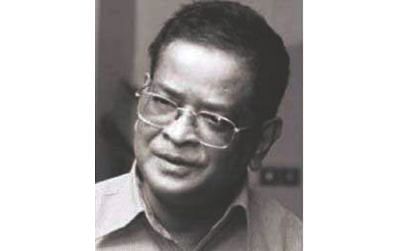Humayun Ahmed and his stories

It is much easier to give pain than to entertain. It was Humayun Ahmed who invariably regaled us with his innate power of storytelling. Some days ago I was thinking I would include an essay entitled 'Golpokothok Humayun Ahmed' in my first book of selected essays. For this reason I desired to take an interview of Humayun Ahmed. Since I didn't have any contact with him, I planned to make it through one of my favourite storytellers, Syed Manzoorul Islam. However, when I heard the news that Humayun Ahmed had been affected by colon cancer, I abandoned the hope of interviewing him. But I didn't give up hope of penning an essay on his storytelling. Whenever I take interviews of different authors I question them about Humayun Ahmed.
I can recollect the day when, in an interview, Professor Fakrul Alam said he did not support those who made very plain and general comments regarding Humayun Ahmed, who had proved his abilities in a number of novels like Jostnya Jononeer Golpo, Nondito Noroke and so on.
Last year I was taking an interview of Syed Manzoorul Islam, an eminent litterateur and storyteller of Bangladesh. It was he who made me rethink Humayun Ahmed. Before this conversation I, like the average critic, was accustomed to believing that Humayun Ahmed wrote targeting a particular age group and that no work of Ahmed could scale literary heights. Syed Islam first told me that Humayun Ahmed was an author who followed our age-old tradition of story telling in lieu of story writing. Story writing is a form which has come to this region from the West. Humayun Ahmed discarded this borrowed form of story writing. He believed in the power of our culture, myths and tradition. He had a great passion for nature and his love of nature made him village centered. In many of his discourses he narrates the tales of rural people, avoiding the hustle and bustle of city life in search of integrity. He believed that the integrity which characterises village people is absent in urban people. The very design of Nuhash Polli is remarkable proof of it.
Humayun Ahmed penned over two hundred books. Of course all of his novels or discourses will not achieve literary value because it is true that a writer cannot live in the hearts of his readers for all of his works but rather for a selected number of his noted works. Humayun Ahmed is noted for such creations as Nondito Noroke, Jostnya Jononeer Golpo, Badshah Namdar, Deyal, Maddyanno, Himu and Misir Ali sequel, et cetera. Syed Manzoorul Islam suggested that I read Badshah Namdar, a novel based on history. Humayun Ahmed has successfully proved that a novel can be written by taking history as the main ingredient. He distinguishes himself by a unique, simple literary diction that was quickly to become popular. His storylines often blend reality with supernatural episodes. This blend is in some ways similar to magic realism. He dealt with rural as well as urban life with equal intensity of observation.
Frankly speaking, in the early 1980s when readers almost left off reading Bangla novels, except the literary works of Tagore, Sharat Chandra, Manik Bandhapadhay and their contemporary writers, it was Humayun Ahmed who caused a breakthrough in this system. Readers are compelled to read his tales due to his unique style of storytelling, which has a great resemblance to our oral tradition. And the way we speak has been portrayed in his novels or stories. Consequently, readers find their own life tales in those stories of Humayun Ahmed. The masses were directly involved in his discourses. Conversely, when people got bored watching the same kinds of stories in television dramas or serials, it was Humayun Ahmed who turned people from monotony by infusing wit or humour in his stories.
A few months earlier when Syed Manzoorul Islam wrote a review in Prothom Alo after reading the press copy of Humayun Ahmed's latest novel Deyal, some critics emerged to identify this novel as a narrative of dead history. Possibly they have skipped the story behind history or simply failed to understand the science of composing a historical novel. In addition to this, it is my request to them to go through the review of Syed Islam with much concentration in order to understand the strength of Humayun Ahmed as a creator of the historical novel. Readers may wonder about frequent references to Syed Manzoorul Islam in this write-up. The truth is I have learnt much about Humayun Ahmed's style of story telling from him. And I think Syed Manzorul Islam has rightly evaluated him more than any other critic. Hence the repetition.
Needless to say, a writer of huge number of works may fluctuate in maintaining a standard. But at the same time there is no way to deny that some works of such writers generally have such qualities that touch literary heights. A writer has strengths as well as weaknesses and our Ahmed is no different from it. However he had those strengths which we find in few storytellers in Bangladesh. We all know that Humayun Ahmed was harshly criticized for many of his works in his lifetime. But in future will it be possible to write the history of Bangla literature by discarding Humayun Ahmed? Of course not. I salute this magician of tale.

 For all latest news, follow The Daily Star's Google News channel.
For all latest news, follow The Daily Star's Google News channel. 



Comments